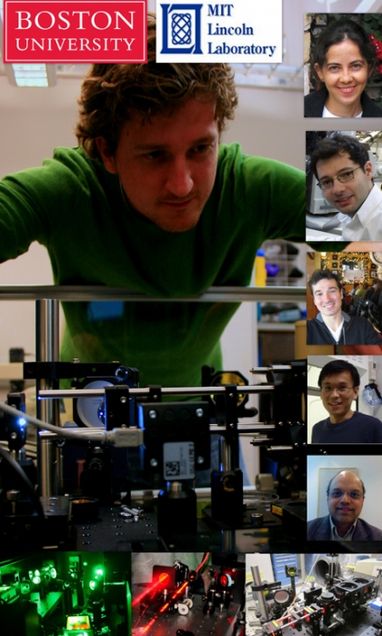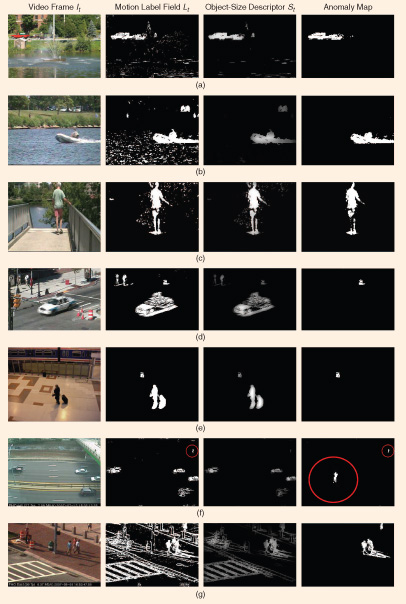ENG Researchers Partner with MIT Lincoln Laboratory on Advanced Imaging

Surveillance video from unmanned aerial vehicles (UAVs) generates a tremendous amount of data, making it difficult for ground controllers to identify and track suspicious activities in short order. But advanced techniques that Professor Venkatesh Saligrama (ECE, SE), in collaboration with a researcher at MIT Lincoln Laboratory, is developing to analyze airborne video imagery could enable controllers to respond much faster to potential security threats.
Saligrama is working with Sumanth Kaushik of the Space Control Systems Group at Lincoln Laboratory, the second time that Lincoln Laboratory has selected Boston University’s College of Engineering as a partner to advance its research agenda as part of its Campus Collaborations program. The first joint project, launched in 2009, focuses on biophotonics.
Accelerating Airborne Video Analysis
For Lincoln Laboratory, which is teaming up with leading imaging experts in the northeastern U.S. to pursue research organized by its emerging Imaging Sciences Center, Saligrama was a natural choice.
“Professor Saligrama is a national leader in video analytics, and his group has made several important advances in automated exploitation of motion video imagery,” said Kaushik, noting that Saligrama’s work has thus far been applied mainly to ground-based imagery. “Our plan is to adapt his work to the analysis of video imagery taken from UAVs, a very important and growing area for the U.S. military.”
Rather than classify and track objects in a video stream, as most video surveillance software does, Saligrama’s approach breaks footage down to a sequence of snapshots, compares pixels in subsequent snapshots for subtle changes, and uses statistical methods to identify and locate pixel-level changes that depart from normal activity within the monitored scene. Data collected on these anomalies can then be tracked via conventional software systems.

In their joint project, Saligrama and Kaushik aim to enable analysts not only to identify unusual activities in airborne video very quickly, but also to find specific events in archived data.
“We’re developing fast, cheap and reliable algorithms that can process the video on-the-fly and search through it with respect to a specified activity,” said Saligrama. “Our event-based features will enable characterization of activity across different videos.”
Enhancing Molecular-Level Biomedical Imaging
The first collaboration between the College of Engineering and Lincoln Laboratory involves Professor Shyamsunder Erramilli (Physics, BME, MSE) and Thomas Jeys, a senior staff member in Lincoln Laboratory’s Laser Technology and Applications group. It seeks to advance the state-of-the-art in molecular-level biomedical imaging, and draws on research conducted by Assistant Professor Hatice Altug (ECE, MSE).
“Shyam Erramilli has substantial expertise in biochemical detection and both he and Hatice Altug are world experts in infrared nanoplasmonic arrays,” said Jeys, referring to technology that manipulates light to enhance vibrational signals of atomic bonds within molecules—signals that can uniquely indentify specific biological molecules.
“We’re mating our nanosplasmonic arrays with their quantum cascade laser detection system—and a microscope that Alket Mertiri, graduate student in Materials Science and Engineering, has built at the Photonics Center—to obtain the infrared ‘chemical fingerprints’ of biological macromolecules such as proteins, nucleic acids and lipids,” said Erramilli.
The joint project is part of a broader collaboration between Lincoln Laboratory and the BU Photonics Center to develop new capabilities in infrared biochemical imaging to dramatically improve the sensitivity, response time and spatial resolution of biochemical detection and imaging technologies for disease pathology, proteomics, trace biochemical detection and biological and chemical agent detection, said Jeys.
This work is sponsored by the Department of the Air Force under Air Force Contract #FA8721-05-C-0002. Opinions, interpretations, conclusions and recommendations are those of the author and are not necessarily endorsed by the United States Government.